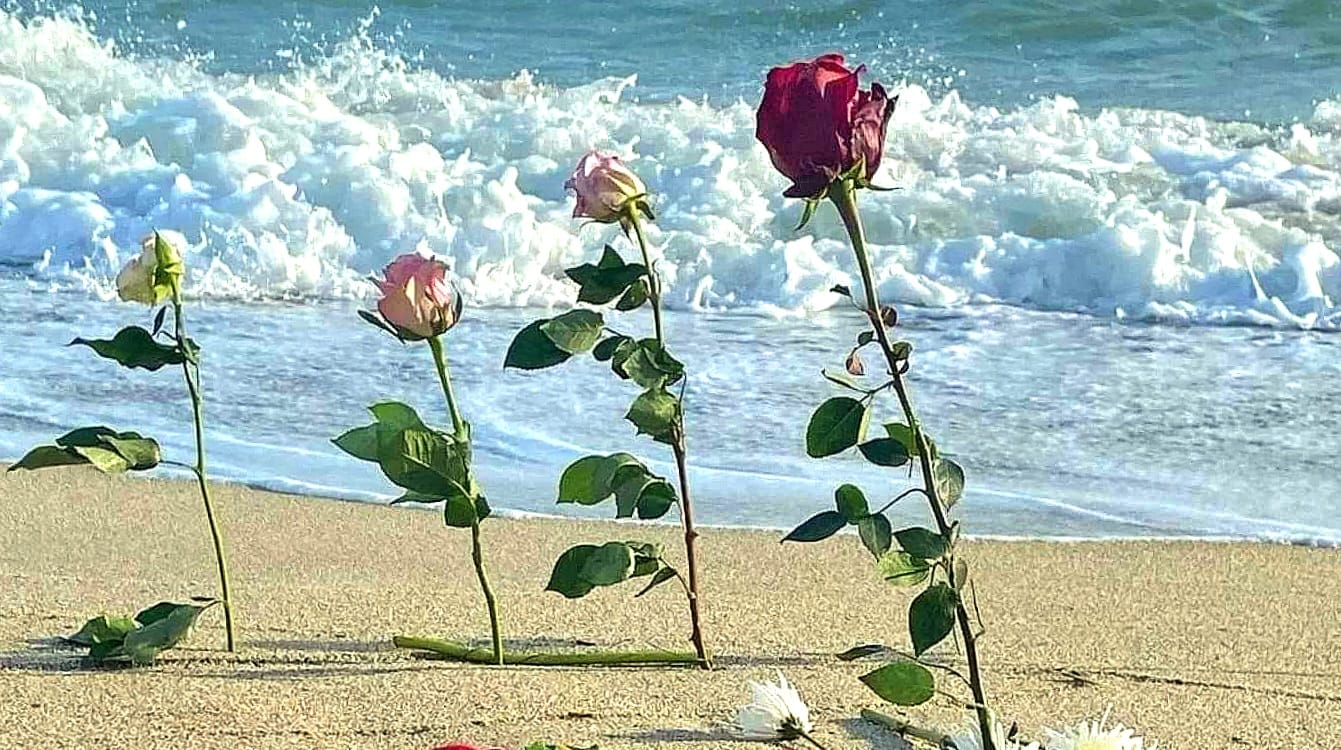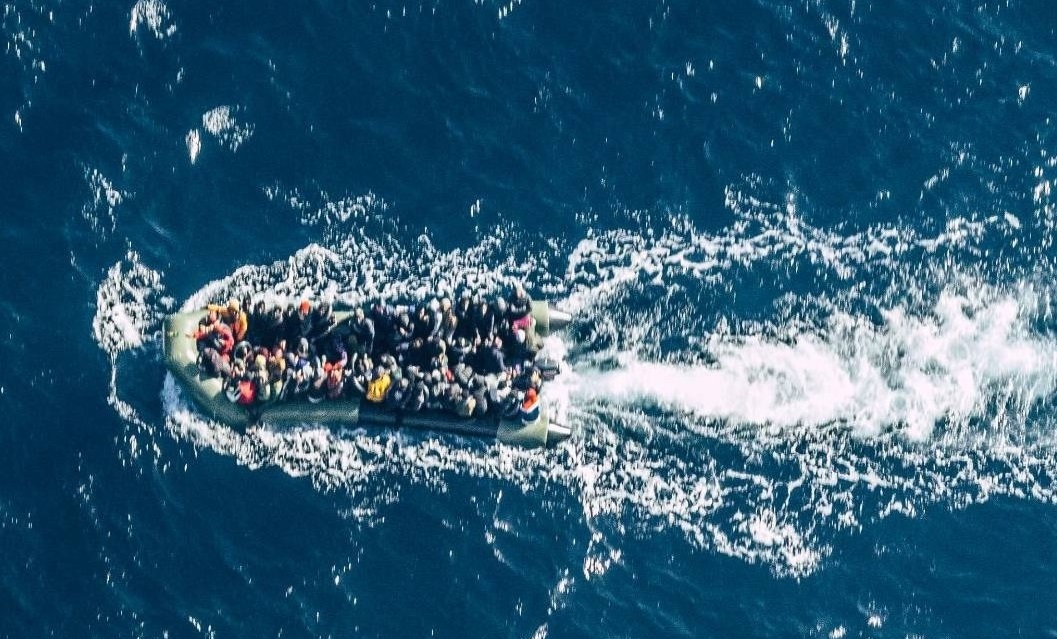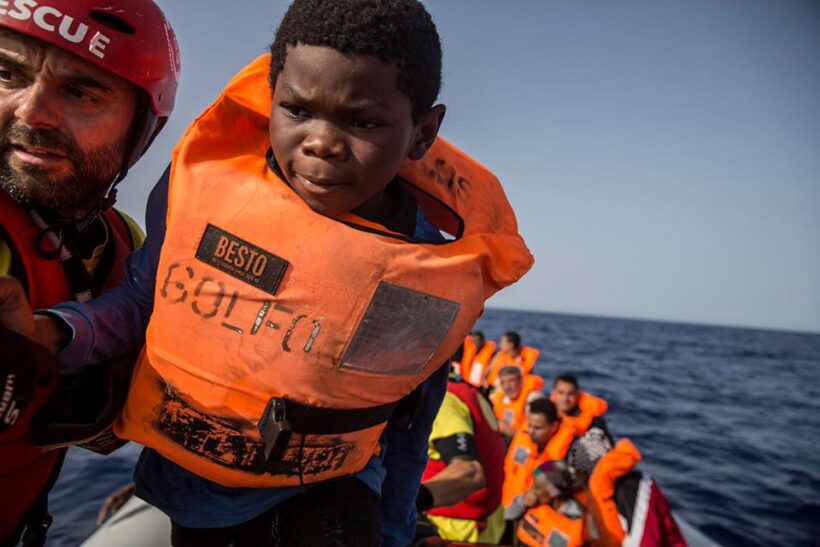From Cutro to Riace, from Mexico to Greece, from makeshift camps to detention centers: the current history of migration is riddled with contradictions, inefficiencies and hypocrisy. According to Anna Polo, activist and journalist, the first step is to recover a more humane approach that puts people first and not political strategies.
By Laura Tussi
Migrants from different parts of the world flee wars, environmental disasters, poverty, terrorism, violence, massacres, and genocides. They legally and safely seek welcome, assistance and solidarity in our territories, but the so-called civilized and progressive West responds with a vicious policy of refoulement and with increased war and military spending, fueling the risk of a third world war and a nuclear apocalypse.
We talk about this with Anna Polo, a journalist with the international press agency Pressenza, which deals with migrants not only by publishing in-depth reports, interviews and communiqués from sea rescue NGOs but also by being active in person and organizing campaigns and events together with other associations on the criminalization of solidarity and on glaring cases such as that of Riace and the more recent one of Cutro.
Where do you think we can start in order to talk about a phenomenon as broad and complex as migration?
As you have already said, those who try to arrive in Europe – and even in the United States, trying to cross the Mexican border – are fleeing from atrocious situations that we Westerners cannot even imagine, or more simply want to improve their lives and have new experiences. And here we come to a crucial question: why is it that a young European can move freely, and seek study and job opportunities in other countries, and his African or Asian peers cannot?
Having the wrong passport undermines one’s entire life and constitutes unacceptable discrimination. Reflecting on this inequality can help us approach the issue of migration from a human perspective, putting ourselves in the shoes of those who do not have the same possibilities as we do and perhaps striving, as in my case, to repair this injustice.
What are the consequences of the “border protection” policy pursued by the European Union?
Tragic consequences: from 2014 to date, drowned and missing deaths in the central Mediterranean it comes to more than 25,000 people. In the year 2022 alone, 30,000 men, women and children were returned – by patrol boats financed by Italy under an infamous agreement with Libya – to the hell from which they had tried to escape. Thousands of people are violently pushed back at the Polish-Belarus border, and the same happens with the Balkan route to Trieste and to those trying to cross the border between Italy and France. Illegal rejections also take place in Greece and all [are] in open violation of international law and conventions.
Those who manage to arrive in Europe are confined to prison-like camps, such as on the Greek island of Samos, where they have to wait for months and years for their asylum applications to be processed and are forced to make do in encampments such as the Calais “jungle,” which are continually cleared by the police, or even though they have committed no crime they end up in horrible places such as Italy’s Centri di Permanenza per i Rimpatri (Italian repatriation centers) (CPR), where every human right is violated with impunity.

Samos Island. Migrant encampment. Photo by Gemma Bird

Samos Island. Migrant center. Photo by Doctors Without Borders.

Migrant encampment cleared in Calais. Photo by Giacomo Longo.
Do current events confirm this dramatic scenario?
The recent Cutro massacre is a heartbreaking example of this policy: the Italian government has let people drown who could have been saved and is now trying to evade its responsibilities by declaring war in bombastic tones on the traffickers of the sea and the smugglers. However, a fundamental point is ignored: the smugglers are often young migrants forced to drive the barges, the last link in a much larger network, whose summits remain in the shadows.
These apexes, the real human traffickers, are certainly criminals, but they could not demand exorbitant sums from desperate people, forcing them on dangerous and often lethal journeys, if there were legal and safe channels of entry into Europe. So the real perpetrators of these tragedies are the European and national authorities.

Flowers on the beach in Cutro. Photo by Network Feb. 26 [2023]
And instead, those who fill the gaps left by institutions are criminalized….
That’s right. For years, sea rescue NGOs have been persecuted with media campaigns based on slander and fake news, lawsuits and measures such as sanctions and administrative detentions. The real purpose is to empty the Mediterranean of inconvenient witnesses, and the consequences are increased deaths at sea. Human rights defenders and lawyers are also targeted, slandered and subjected to trials based on absurd accusations, with the obvious purpose of discouraging their activities.

Photo by Sea Watch
Something, however, is being done to react to this horror….
Yes, fortunately, there is a generous and supportive civil society – we saw this in the demonstration on Saturday, March 11 [2023] in Cutro – that is organizing denunciation and awareness-raising events to support those who make a real welcome, like Mimmo Lucano in Riace, and those who, like the sea rescue NGOs, save lives in the Mediterranean. One example is the “UN Flag for Humanitarian Ships” campaign, which as Pressenza we are launching together with the Naples Human Rights Film Festival, RESQ People Saving People, Unimondo, ASGI, Pax Christi and Atlas of the World’s Wars and Conflicts.
The campaign consists of a petition on change.org and two requests to the relevant UN authorities: to endow NGO ships with the UN flag so as to protect the work of those who give concrete implementation to the duty of rescue at sea provided for by international norms, and to cancel the so-called Libyan Sar zone because Libya does not guarantee any safe harbor or respect for human rights.
I would like to conclude with a quote from the German poet Friedrich Hölderlin, which in my opinion expresses in an inspired and concise form everything we have talked about so far: “There where there is danger, there also grows that which saves.”






